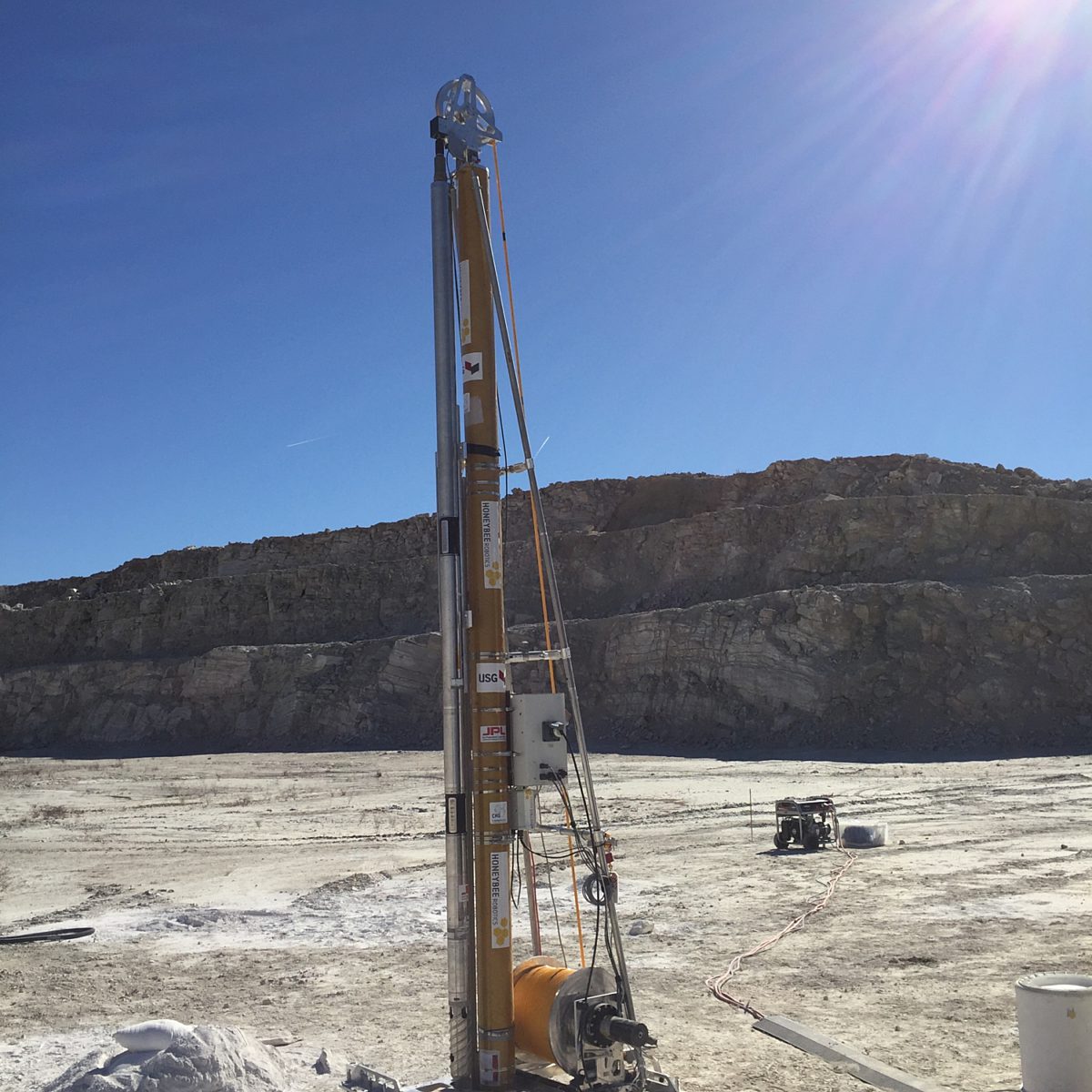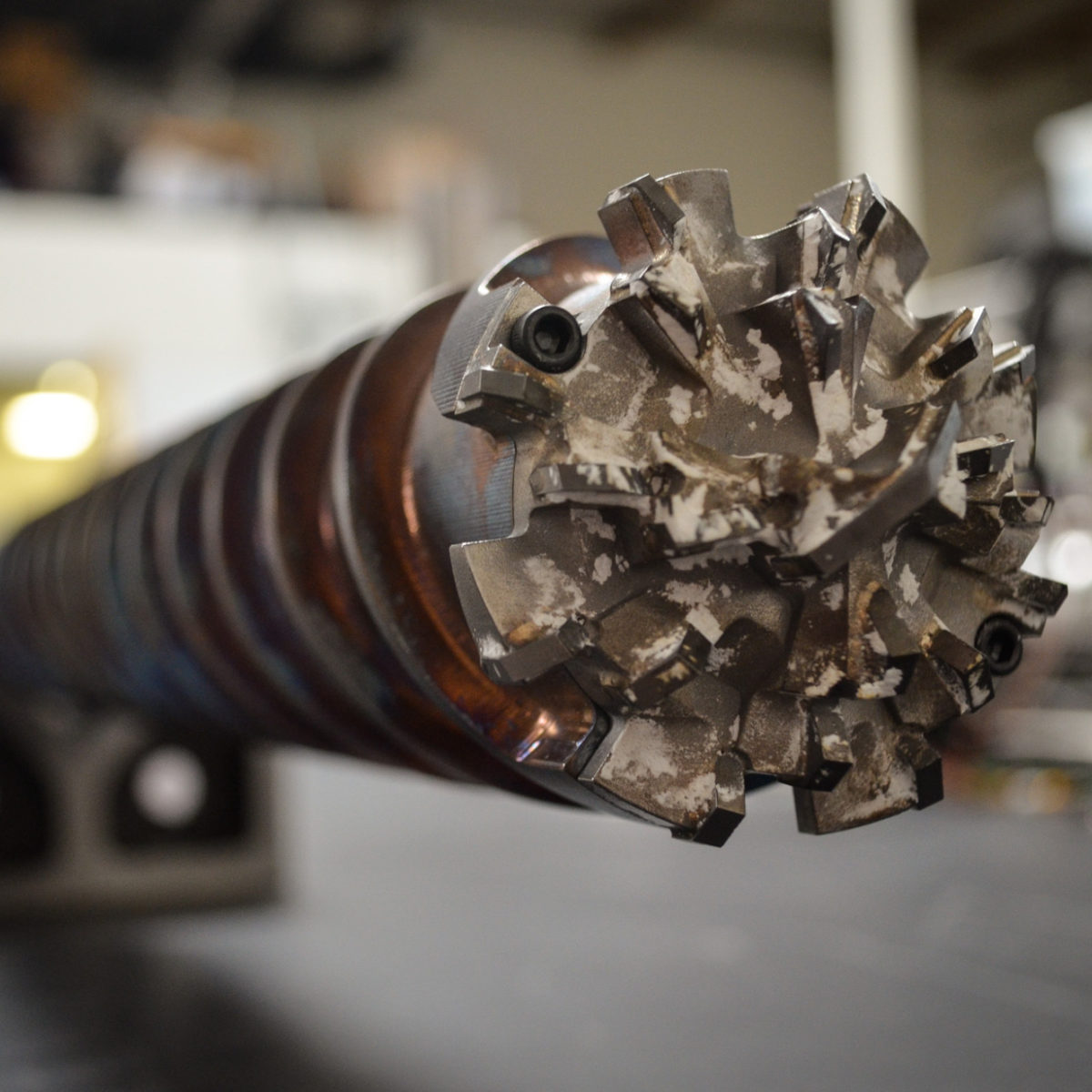Planetary Deep Drill
In 2013, NASA's Curiosity rover drilled a few centimeters into the surface of Gale Crater on Mars, discovering clays and sulfates that indicated the spacecraft was probably sitting on an ancient lake bed.
What if we could go deeper? What secrets could we find meters, or even kilometers, under the Martian polar ice caps? Or beneath the icy crusts of Europa and Enceladus?
That's the idea behind the Planetary Deep Drill, a new technology built by Honeybee Robotics. Honeybee hopes to fulfill one of the biggest needs for subsurface planetary exploration: lightweight, portable drills that pack enough punch to probe deep beneath planetary surfaces.
In late 2015, The Planetary Society sponsored Planetary Deep Drill field tests at a gyspum quarry near the Salton Sea in southern California. The tests were a success. Honeybee returned for followup tests in 2018, and plans to test the technology in Greenland in 2019. NASA is also working with Honeybee to equip the drill with an ultraviolet light spectrometer that can detect the presence of organics.


 Explore Worlds
Explore Worlds Find Life
Find Life Defend Earth
Defend Earth





